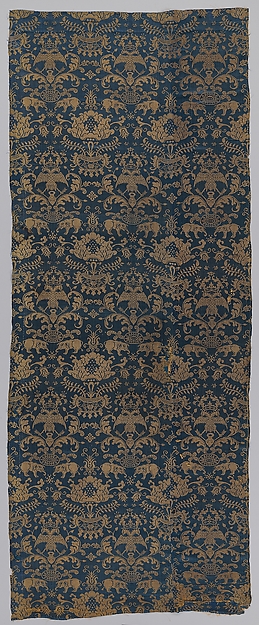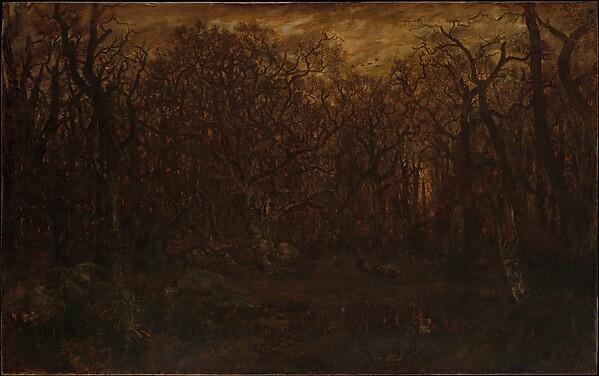Textile with elephants, crowned double headed eagles, and flowers
Second half of the 16th century
This is a piece woven in China and is believed to have been traded by the major ports within the vicinity of the ports of Honk Kong and Macau. The elephant on the piece is believed to be an Asian elephant. The elephants were given to emperors as tributes from the local rulers. They were also used as diplomatic gifts. Within a European context, elephants were offered as gifts from the Portuguese to the courts of various nations including France, England, and Spain. The combination of both Buddhist symbols and the eagles of Habsburg shows a mixing of two cultures. Given the symbolic meanings of this silk damask, one can only assume it would be gifted by the highest of nobles to gain favor from other places or to gift as a sign of diplomacy.
http://images.metmuseum.org/CRDImages/es/web-large/DP267564.jpg
The Forest in Winter at Sunset by Theodore Rousseau 1812-1867
This piece is ideal of a Romantic piece. The strong dark colors used, shifting shapes of the branches contrasted by the supposed sunlight gives the audience a eerie feeling. The red specks on the trees may appear to just be the light of the sun at first, however, upon closer inspection it may be referring to a forest fire. The broken tree towards the center along with the leafless trees shows that calamity might be just around the corner. The dark shading among the top also seems to be almost smokey-like. This type of painting seems almost radical. The lone person in the center of the picture seems minuscule and almost insignificant within this darkened interpretation of nature. This painting may be a critique on a variety of things, including the industrial revolution. It could be showing a possible future in which nature is ruined and defaced by industrialization.
http://images.metmuseum.org/CRDImages/ep/web-large/DP247630.jpg

Chun Li











